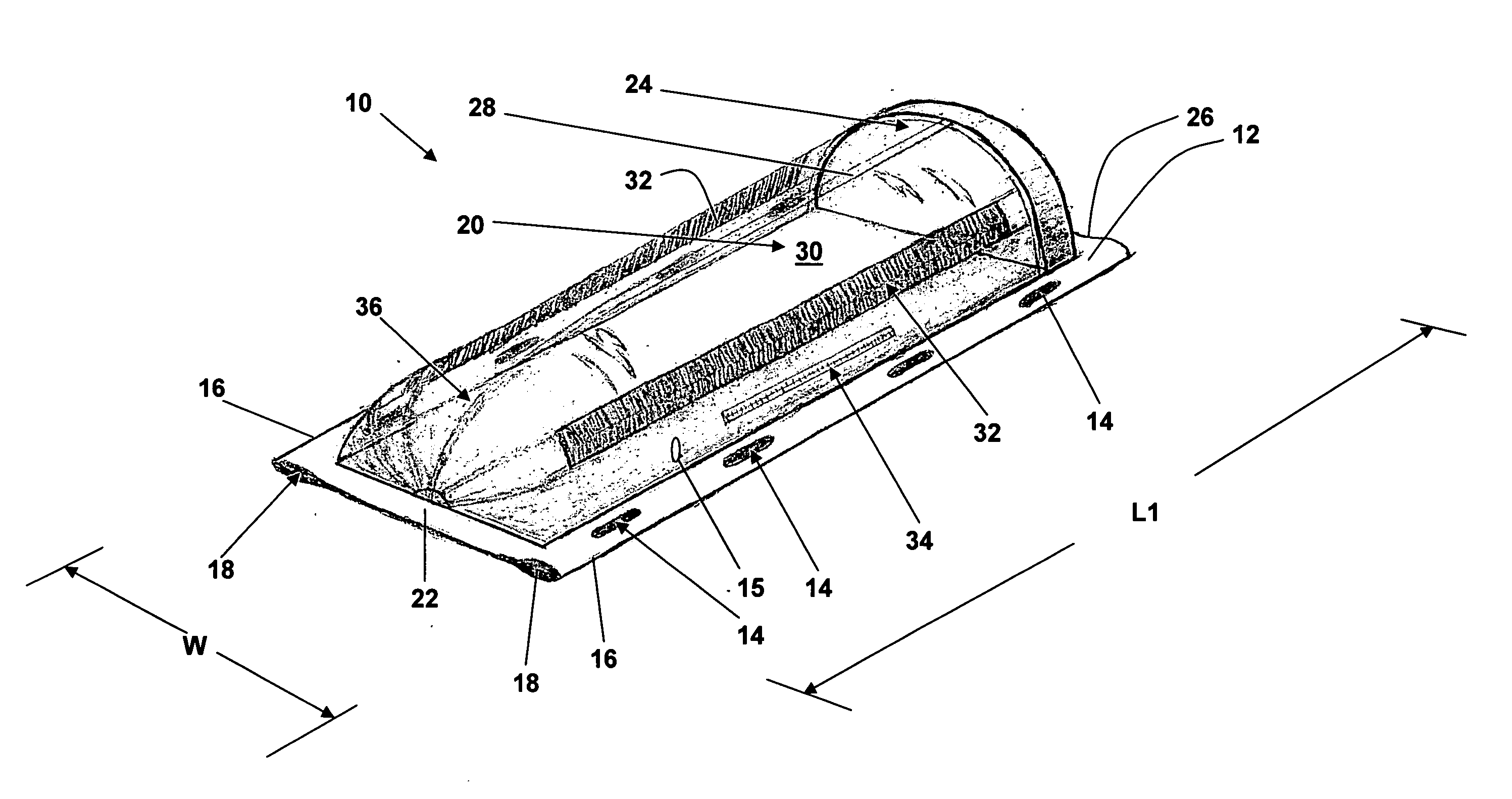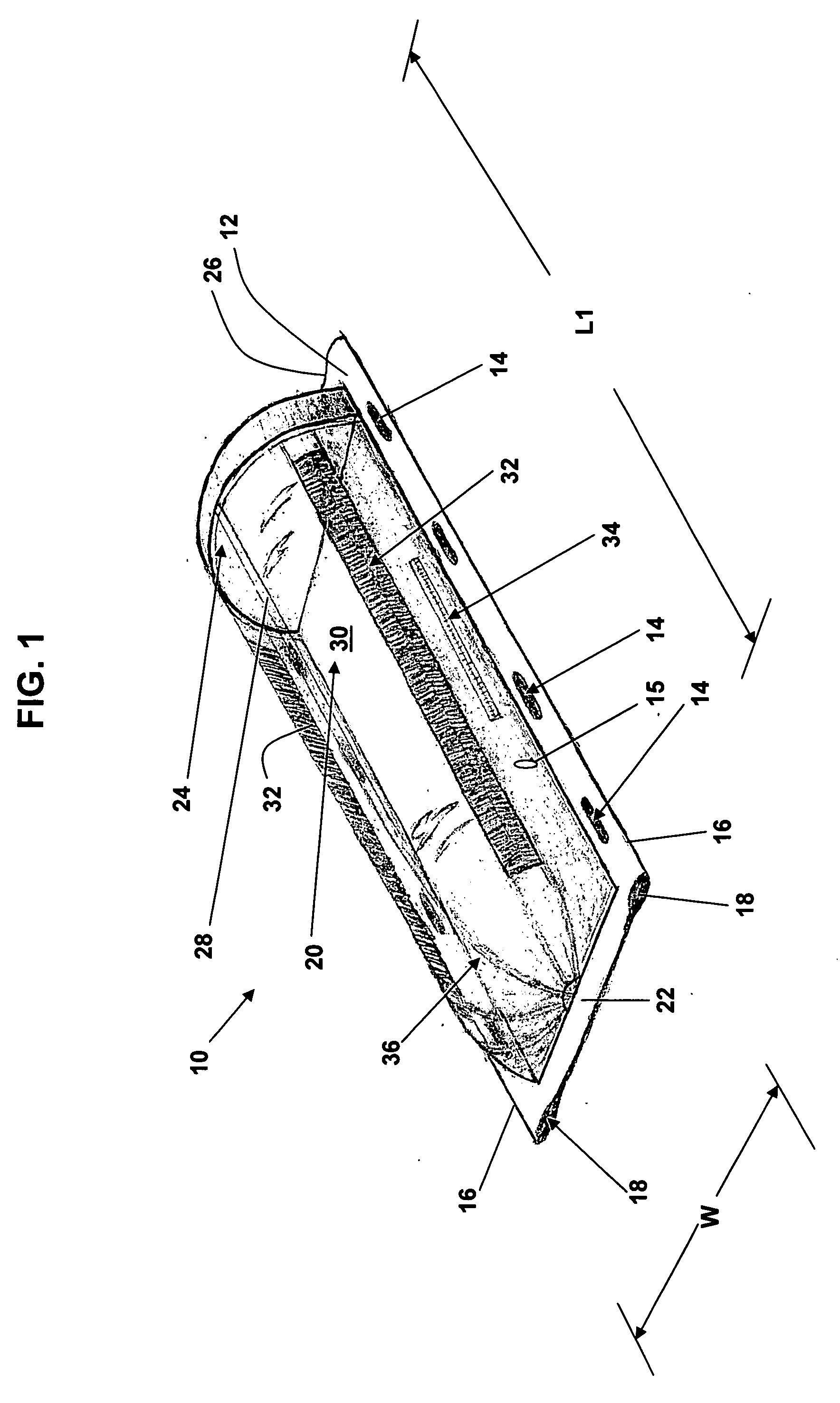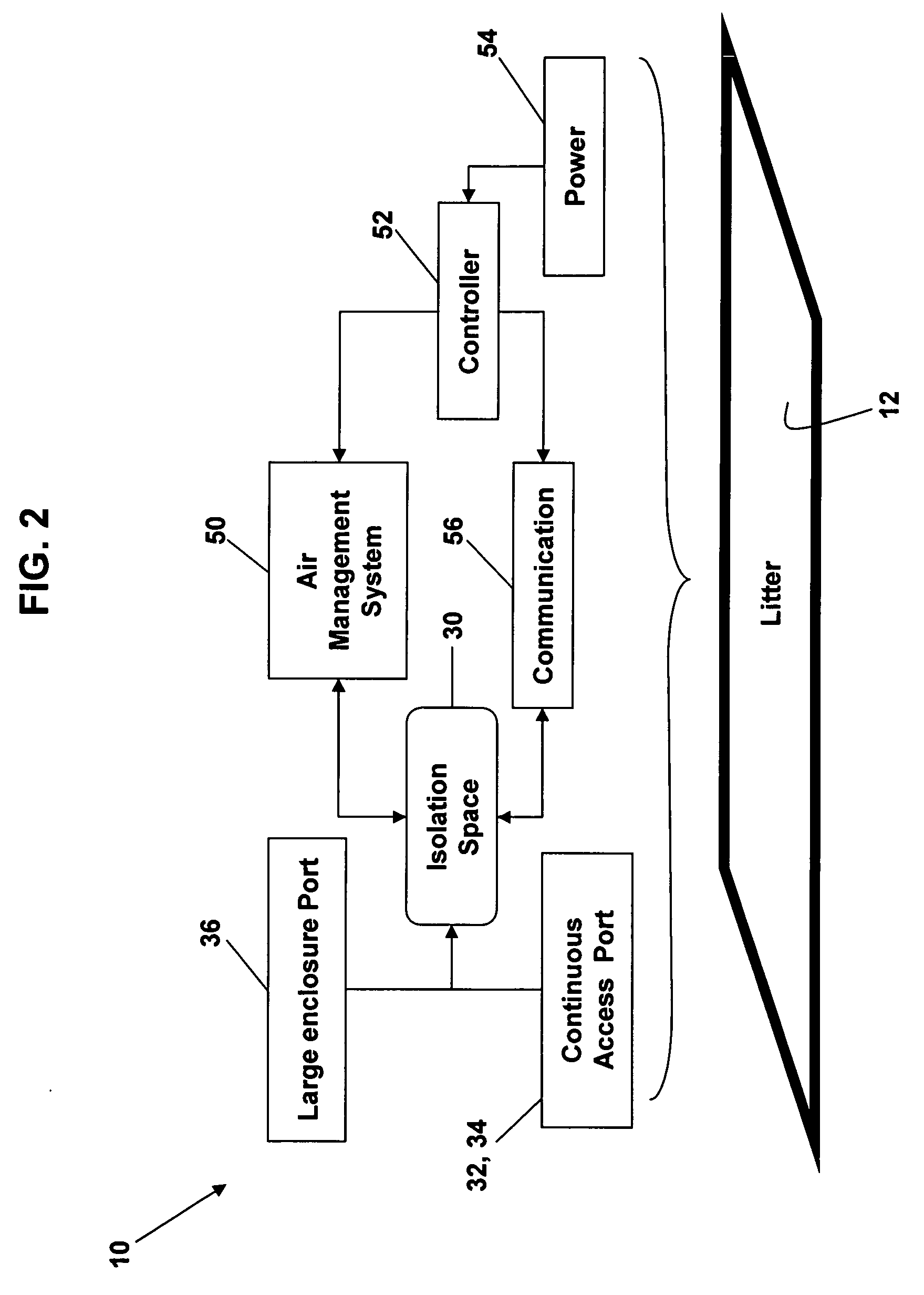Apparatus and method for providing continuous access to an isolation space while maintaining isolation
a technology of isolation space and apparatus, applied in the field of isolation containers, can solve the problems of patient, if not isolated, infecting and contaminating medical personnel treating and transporting patients, spectators, transport vehicles and surroundings, and patients who are not isolated during transport, etc., to achieve the effect of regulating pressur
- Summary
- Abstract
- Description
- Claims
- Application Information
AI Technical Summary
Benefits of technology
Problems solved by technology
Method used
Image
Examples
Embodiment Construction
[0042] For purposes of highlighting the features of the present invention, an isolation container for providing ease of continuous access to, and maneuverability within, an isolation space defined within the container while maintaining the isolation space substantially isolated from the external environment is described in detail below in connection with an isolation container adapted for transporting a patient in substantial isolation and providing continuous access to, and maneuverability within, an isolation space in which the patient is received while maintaining the patient substantially isolated. It is to be understood that the inventive of features of providing continuous access to, and maneuverability within, an isolation space while maintaining the isolation space substantially isolated from the external environment are readily applicable to other fields and industries, for example, manufacturing and also chemical and biological research, such as applied to fume hoods and l...
PUM
 Login to View More
Login to View More Abstract
Description
Claims
Application Information
 Login to View More
Login to View More - R&D
- Intellectual Property
- Life Sciences
- Materials
- Tech Scout
- Unparalleled Data Quality
- Higher Quality Content
- 60% Fewer Hallucinations
Browse by: Latest US Patents, China's latest patents, Technical Efficacy Thesaurus, Application Domain, Technology Topic, Popular Technical Reports.
© 2025 PatSnap. All rights reserved.Legal|Privacy policy|Modern Slavery Act Transparency Statement|Sitemap|About US| Contact US: help@patsnap.com



